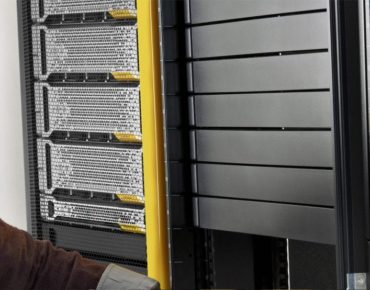3D Flash Poised to Tower over the Storage Skyline

Three dimensions are better than two. I’ve read recently that the same forces that drove the amazing skylines of New York City upwards are operating in the opposite direction in hyper-dense London, driving a wave of underground home extensions and making “Swiss cheese” of the city’s most exclusive streets. I see the same forces at work on a more modest scale in my own neighborhood in California, as people add second stories to older houses. It’s basically the same phenomenon – squeezing more capacity from the same sliver of real estate.
When Samsung Electronics announced in 2013 it had begun mass production of the first three-dimensional Vertical NAND (V-NAND) flash chips, many heralded this as a major breakthrough for a technology running up against severe scaling limits in the world of 2D, or planar, NAND. Since the introduction of NAND flash products in the early ’90s, successive waves of innovation have enabled manufacturers to increase density in two dimensions of the same-sized silicon wafer while steadily lowering cost per gigabit.
Massive leaps in density
The gains were largely achieved by reducing the size of the data cells. Single-level cell (SLC) architectures with one bit per cell were quickly followed by multi-level cell (MLC) and three-level cell (TLC) designs, spawning whole new product categories (e.g. digital cameras) along the way, and eventually penetrating the enterprise storage market. But as cells continued to shrink, maintaining endurance became more challenging, and performance gains started to slow.
By stacking MLC or TLC layers vertically, massive leaps in density have become possible. 10TB drives in the standard 2.5-inch form factor are on the near horizon. Samsung is already shipping a 15TB-plus SSD designed for the enterprise market. At the same time, 3D NAND improves on the performance of the later generations of planar chips, with faster sequential read/write and random read/write times, faster P/E, and greater endurance.
Flash forward to the tipping point
3D NAND technology is highly scalable in production, and the efficiencies it offers in both reads and writes, as well as power consumption, will continue to climb as manufacturers increase the number of stacks on the wafer.
These advances open some big opportunities for data center storage applications. With higher capacities, you can fit more storage into the same amount of rack space. Also, lower latencies allow for faster access to the storage. Add to that improvements in power efficiencies, where the TCO savings in power and cooling can be significant over three to five years.
Enterprise flash adoption may be heading for a tipping point. According to DRAMeXchage, a division of TrendForce, SSD pricing dropped in the first quarter of 2016, signaling the further narrowing in the price gap between SSDs and hard-drive disks (HDD). Additionally, according to MarketandMarket in India, the SSD market is expected to grow by 9.5 percent annually from 2016 through 2022.
Planar NAND isn’t going away; it will continue to be offered alongside 3D NAND. But by 2019, 3D NAND will have captured the lion’s share of the flash market. The overall effect of 3D NAND will be to extend flash’s long winning streak of reducing cost per gigabit and keeping pace with Moore’s Law.
Toward the all-flash data center
The move to flash is well under way in the enterprise, and the rise of 3D NAND will only accelerate it. While hard disk drives remain the incumbent technology, companies have been turning to all-flash arrays, to maximize performance for their primary data, and to hybrid flash-plus-disk arrays for secondary sites. 3D NAND may well edge out HDDs in a variety of use cases over the next few years as businesses consolidate their legacy storage assets and move towards a cloud-enabled, highly converged infrastructure. The all-flash data center could be closer than you think.
Flash is not the only storage game in town, of course, and non-flash technologies like non-volatile DIMMs (NVDIMMs) and the new category of persistent memory will introduce a range of new options for fine-tuning enterprise workloads, especially around database and analytics applications. But in its newly invigorated 3D NAND form, I expect flash to dominate the enterprise storage skyline for at least the rest of the decade.
Ivan Iannaccone, worldwide production line manager for HPE 3PAR, is responsible for developing the next generation product roadmap and product strategy for flash storage at Hewlett Packard Enterprise.











